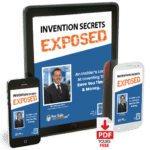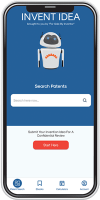Common Misconceptions about Patent Law and How to Avoid Them

Common Misconceptions about Patent Law and How to Avoid Them
Misconceptions are rife when there is minimal understanding or familiarization with patent law. Before submitting your patent application you need to know all the prerequisites concerning an invention. Find out how to avoid such mistakes in this read.
● Professional guidance
● Patent law
● Patent misconceptions
A patent is a right granted to an inventor for their intellectual property, allowing them to exclude others from developing, using, importing, distributing, and profiting from their invention for 20 years. In principle, the patent law gives the inventor exclusive rights to their discovery from any form of exploitation by others. There are three types of patents.
- Utility patents – are granted to inventors of useful processes or improvements, articles of manufacture, or compositions of matters.
- Design patents – are given to novel, original, and ornamental designs for an article of manufacture.
- Plant patents – are granted to new plant variety creations through asexual reproduction.
There very many misconceptions about patent law. A lot of disillusions occur from misunderstandings, leaving many inventors dishearted after spending money on research and development. Knowledge about patent law and what it entails can help both the inventors and people benefiting from the invention gain from the creation.
Find out how common patent misconceptions affect the inventor and. invention process and how the law applies to these misinterpretations.
Misconception #1: Patents are Easy to Get
The patent process is not easy. The vetting process is rigorous. Any miscalculations can earn you a rejection. Increasing your chances of getting a patent requires professional guidance. The steps toward getting a patent include
Understanding Your Invention
You need to know the full scope of your invention. Learn the aspects of your creation that make it practical and new. Find other ways you can develop your prototype. Find out if your invention has a broad application.
Research
The United States Patent and Trademark Office (USPTO) requires you to disclose any relevant details to get a patent for your invention. You get exclusive rights to your invention to teach or explain how they work. Therefore, novelty is essential. You have to link any research, information, or data available for the benefit of the public.
Choose Your Protection
You have to decide which type of patent is right for your invention. Utility patents are for creations that transform how processes work or things get used. On the other hand, design patents are for innovations that redefine the look of an article. You can go for a provisional patent application and leave some room to modify or sharpen the rough edges of your prototype, then file for the actual patent after one year.
Draft a Patent Application
Drafting a patent application, even a provisional patent, is technical. The application has several portions which determine if the USPTO will accept or reject your application. You may need professional guidance to comply with every step in the Manual of Patent Examining Procedure.
Wait for a Formal Response
The USPTO can take up to a year to give you a formal response to your application. According to statistics, only 11.4% of patent applications get approved on the first submission. You can still re-appeal a rejected application by working on highlighted issues. Professional guidance is still essential at this stage.
Misconception #2: All Inventions are Patentable
Contrary to popular belief, not all inventions are eligible for a patent. The US patent law has standards that patented inventions must meet. You cannot patent ideas, theories, methodologies, discoveries, and data presentations.
The elements of an eligible invention include:
- Statutory component – the invention should be a process, articles of manufacture, compositions of matters, or machinery that improve function. Under this requirement, things like music, books, laws of nature, or electromagnetic signals.
- Novelty – the invention should be the first of its kind in the entire world prior to filing the application. It should not be a subject of public disclosure. Such revelations interfere with the patient’s role in protecting the invention from imitation.
- Non-obviousness – a patent examiner will assess your invention to determine its inventiveness. The process, machine, or composition needs to be non-obvious to experts in the subject matter. The evaluation can be an in-depth discussion with the USPTO about the inventiveness of your invention. The examiner also looks at combinations of previously filled patents to see if they can create your invention. You will only get approval after the patent body ascertain the originality of your invention.
- Usefulness – the invention must be industrially applicable. It should accomplish an intended purpose or fulfill set requirements.
Misconception #3: A Patent Gives an Inventor Complete Control Over their Invention
Although a patent gives you a legal monopoly over your invention, it does not give you complete control. Other people cannot commercially exploit your innovation during the specified period of the patent. However, there is some limitation to this control. They include.
Privacy Use
While other users cannot profit commercially from your invention, they can use it for non-commercial purposes.
Research Purposes
No restrictions exist for scientific purposes. Researchers can use or access patented inventions or information freely without repercussions. The invention is also legally usable as a research tool.
Pharmaceutical Use
You cannot prevent pharmaceuticals from using your patented invention for prescription medicine. Pharmacists can legally use, sell, and distribute medication containing the patented invention for individual use.
The Principle of Exhaustion
You exhaust your patent rights over an invention when you authorize your invention into a product, and it circulates into the market. Thus, you cannot oppose innovations that use the invention. Notably, the exhaustion principle only applies in the European Economic Area. It does not apply internationally.
Use of Invention Before Patent Application
A person or company can exploit the invention before patent protection so long as they use it in good faith.
Compulsory Licenses
While you can refuse to give out your patent license to authorize the use of your invention, a legal authority can issue a compulsory license overriding your autonomy. You will be subject to financial compensation in such cases.
How to Avoid Misconceptions
It is not easy to get familiar with every detail required in patent law and requirements. Research is a crucial aspect of the patent process. Search patent databases and online publications to fine-tune and ascertain the originality of your invention. Professional guidance from a patent attorney is a smart move to ensure you cover everything pertaining to the patent conditions and rules. They are experts in the field and can narrow searches and point you in the right direction.
Find out more on patent laws for research and education purposes on these links.
https://www.uspto.gov/patents/basics/patent-process-overview#step2
https://www.govinfo.gov/content/pkg/USCODE-2011-title35/html/USCODE-2011-title35.htm
Avoid Patent Misconceptions
Patent misconceptions are the most typical hindrances when filing for patents. They can impede the process of having an ingenious innovation under your name. The best way to avoid fallacies and misunderstanding is to capitalize on patent laws and research your invention.
Patent law describes an invention, lists the requirements for the patent application and vetting process, and defines the level of control for the patent holder. It is not enough to have an invention. Know everything there is about your new article. Link this information to your application.
Adequate preparation reduces the chances of rejection and saves time. You can ease the process by seeking professional guidance from a patent lawyer.








